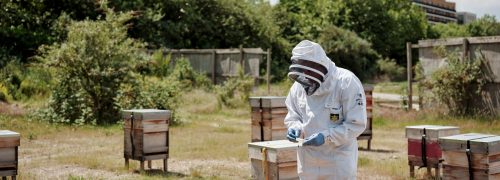
People
Meet the bees at Silvertown Quays
Since last autumn, Silvertown Quays has been home to some new residents. These inhabitants are here in their thousands, filling the air with a gentle hum and ever so slowly turning urban flowers into honey.
Bermondsey Street Bees now have a dozen hives here on the overgrown land within sight of Millennium Mills. The site is due to be redeveloped by the Silvertown Partnership into homes, shops, offices, and a public park. Meanwhile, it’s bee paradise.
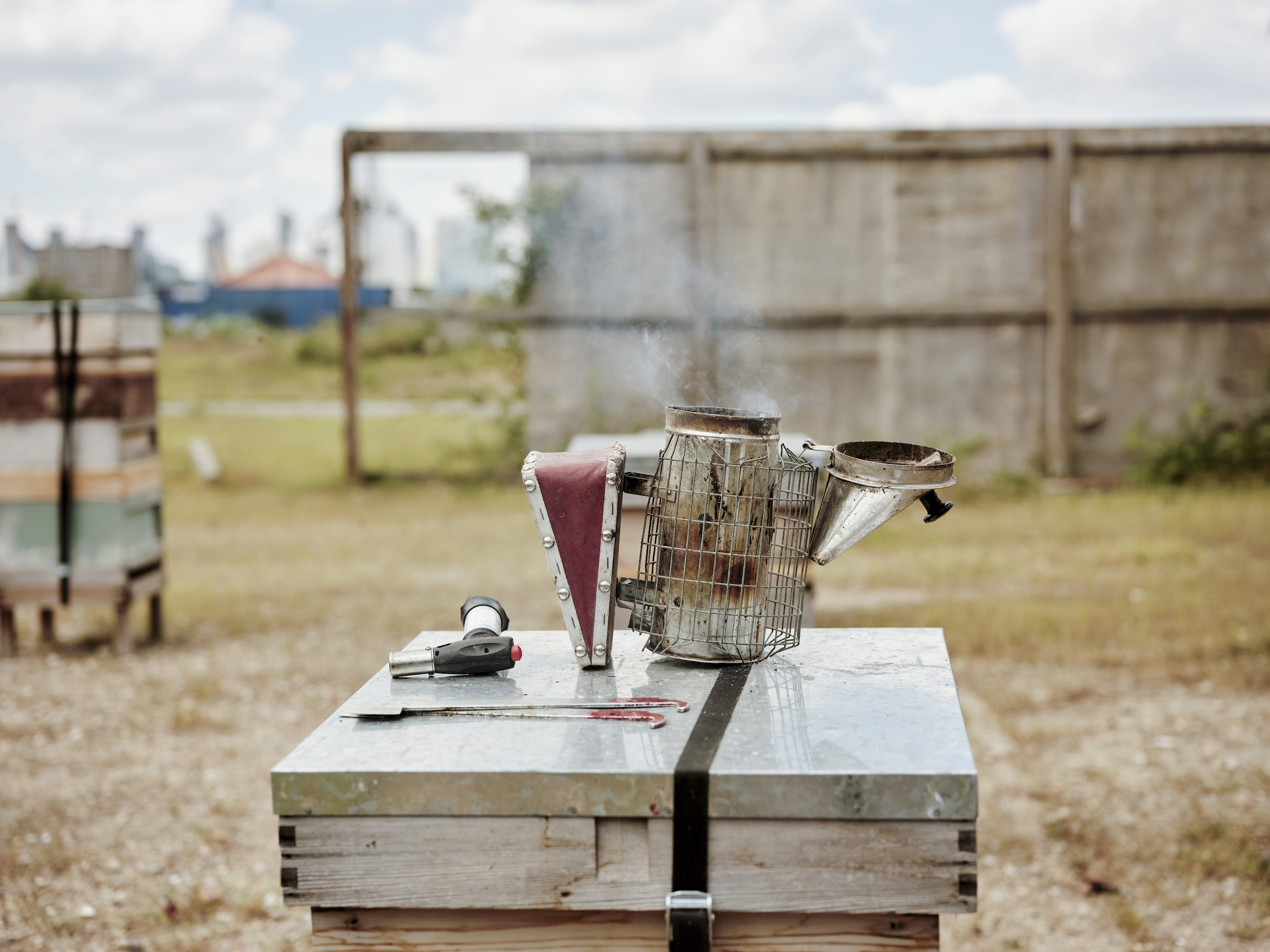
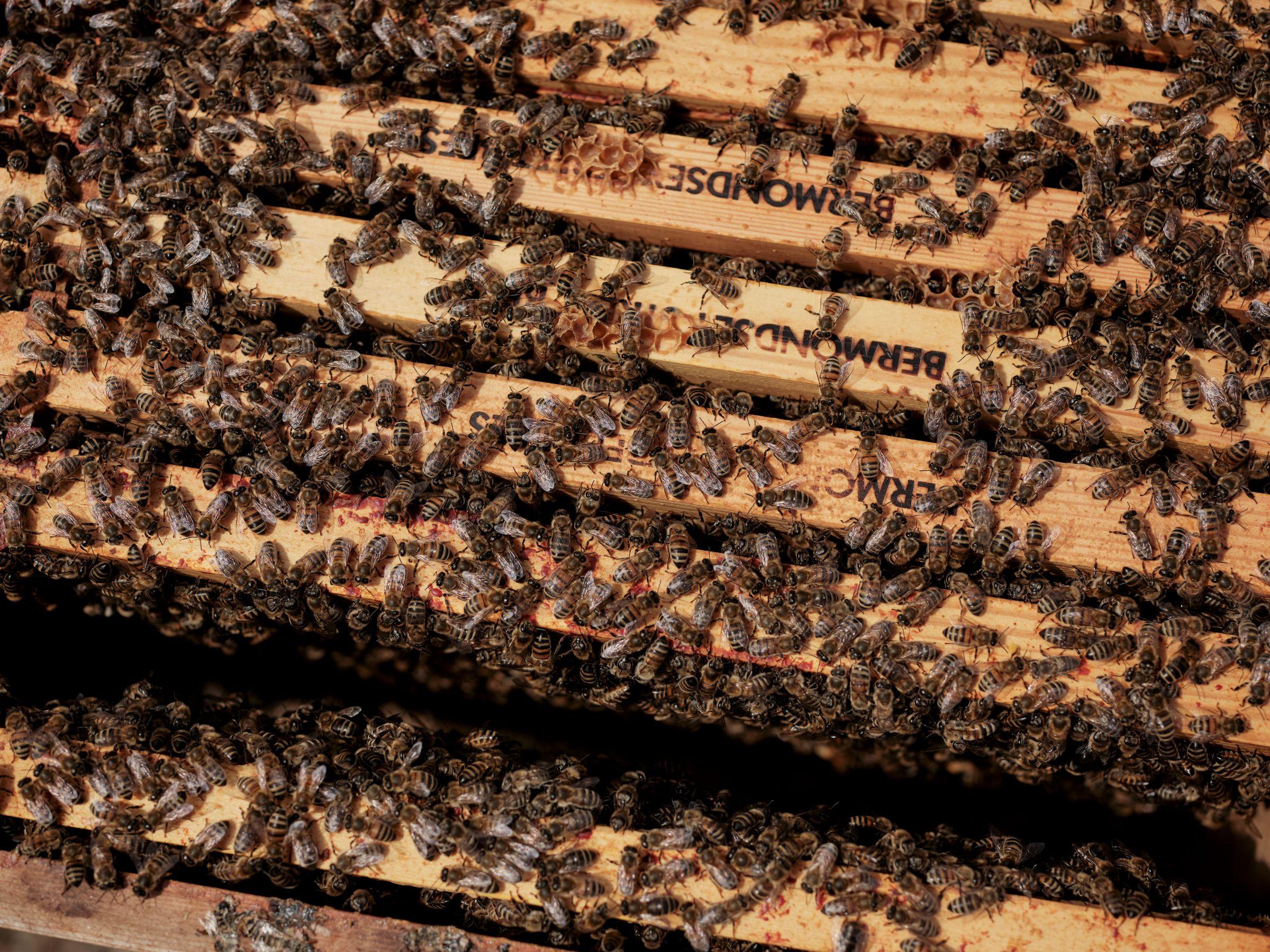
Checking the hives
Smoke pacifies the bees, by encouraging them to gorge themselves with honey in case they have to flee from a fire.
Beekeeper Dale Gibson explains that, while you might think a wildflower meadow would be the best place for a hive, deciduous forests top the list of habitats, as that’s where honey bees are naturally found. Surprisingly, urban brownfield sites like this one are second best, where native plant species have spread over abandoned land.
Places like Silvertown Quays are a rare find: large, deserted green spaces with access to water. Dale says, “This is a terrific wilderness in the middle of a busy city.”
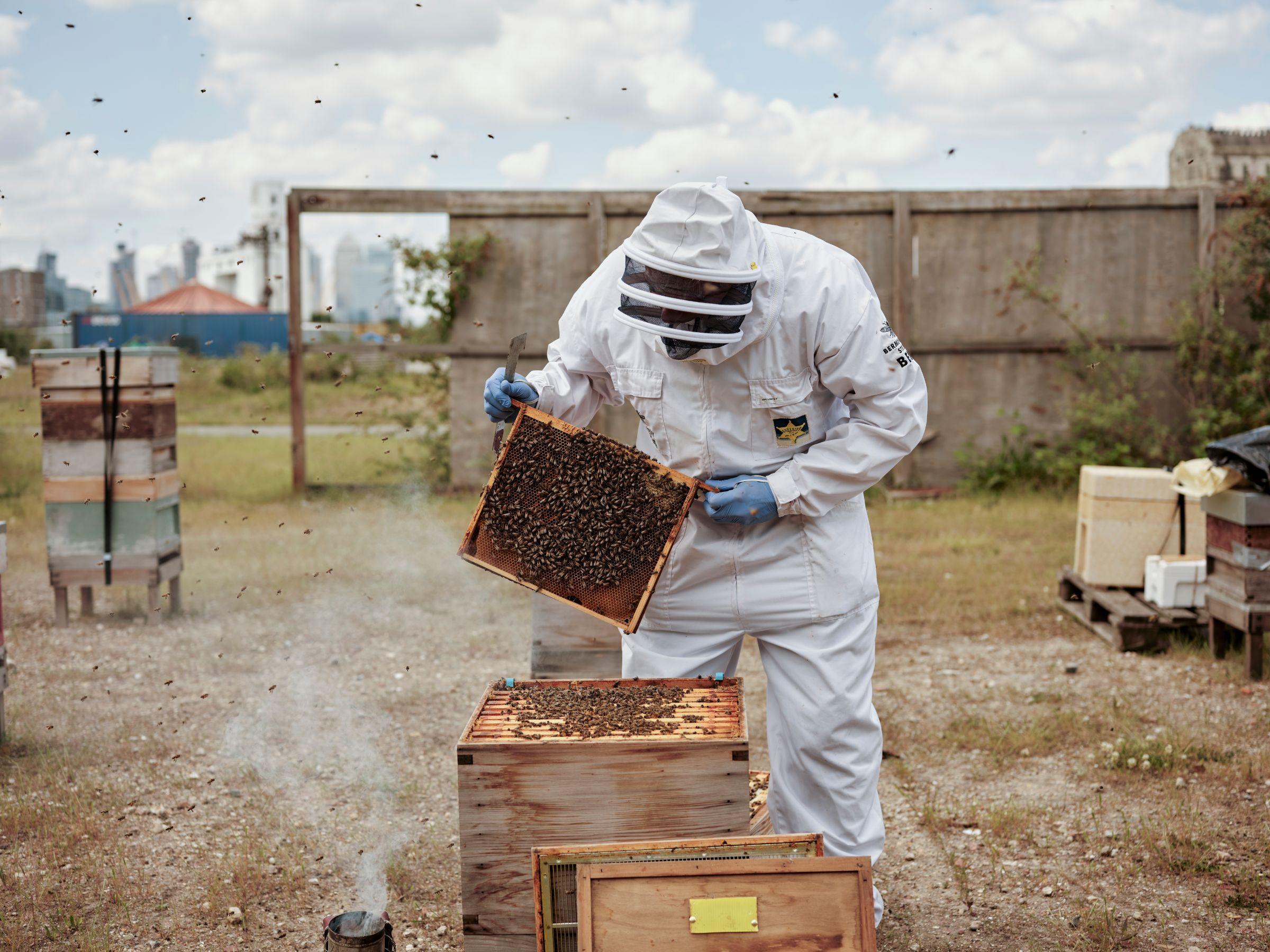
Full house
Every hive is home to around 70,000 bees, but only 15% or so are flying at any one time.
This is a terrific wilderness in the middle of a busy city.
Dale Gibson, Bermondsey Street Bees
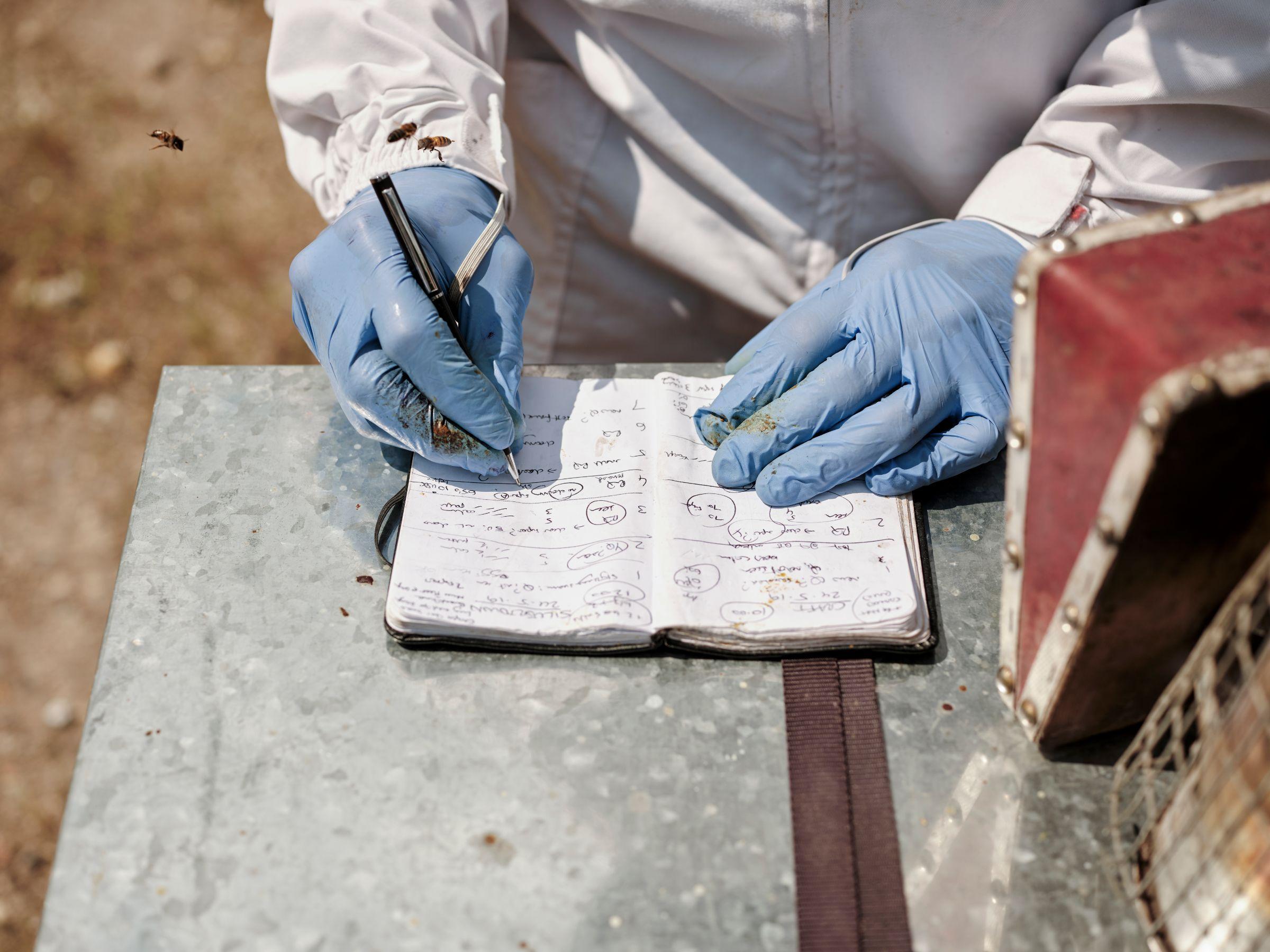
There are around 70,000 bees in each of these hives. It’s a figure that seems barely believable, until he opens one up and begins easing out frames swarming with small furry figures. For an insect so small, bees are expressive creatures. As Dale opens every box, you can immediately sense the mood inside and around it.
He looks over each frame, examining it for signs of health, locating the queen bee, and noting down any changes. Aspiring beekeepers beware: this is methodical and repetitive labour. “Boring, isn’t it?” Dale comments, while clearly engrossed. As he works, tiny beasts fly contentedly around him in a mesmerising dance.
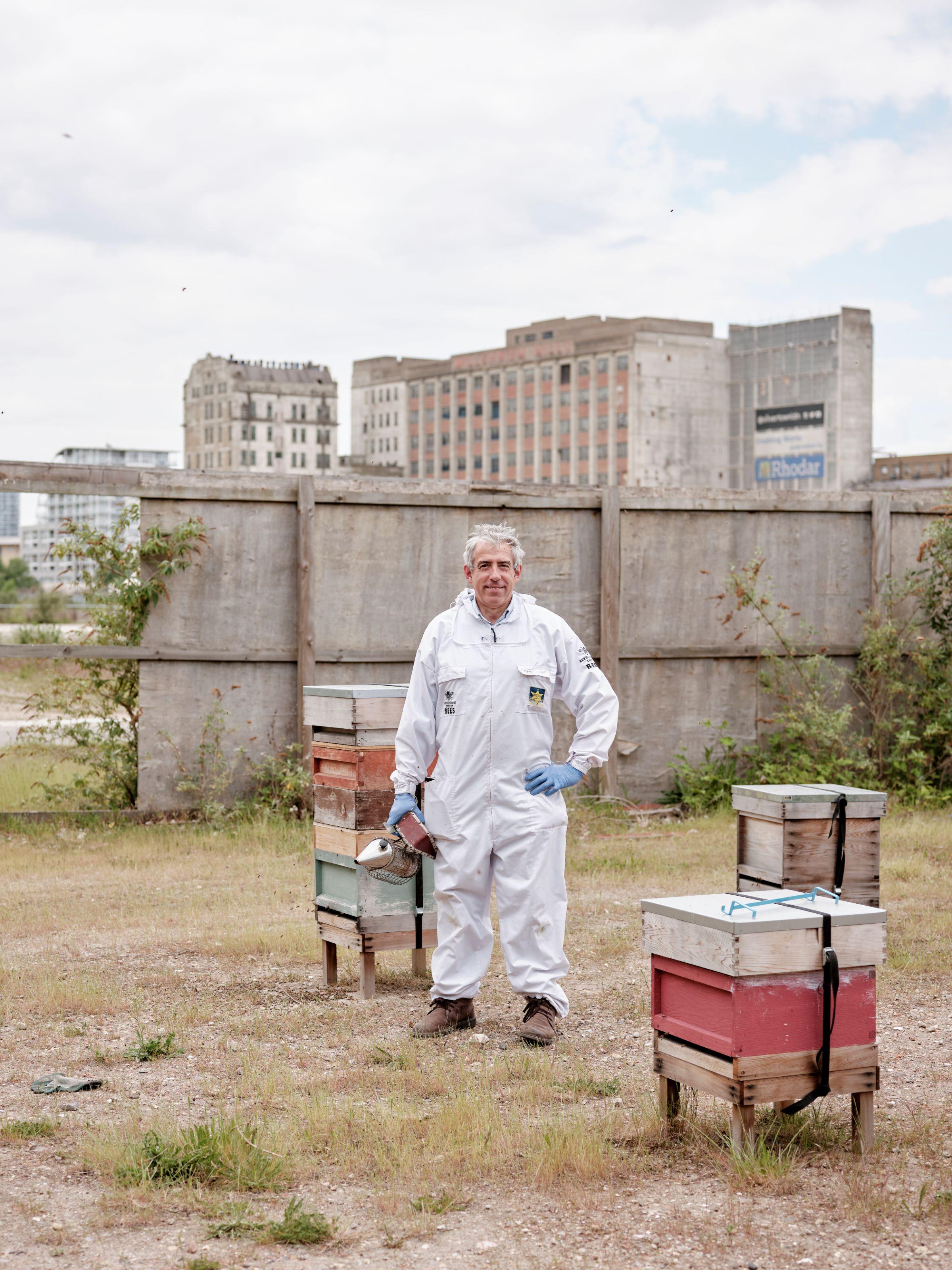
Dale Gibson at Millennium Mills
The site is due to be redeveloped into homes, shops, and a public park. Meanwhile, it’s bee paradise.
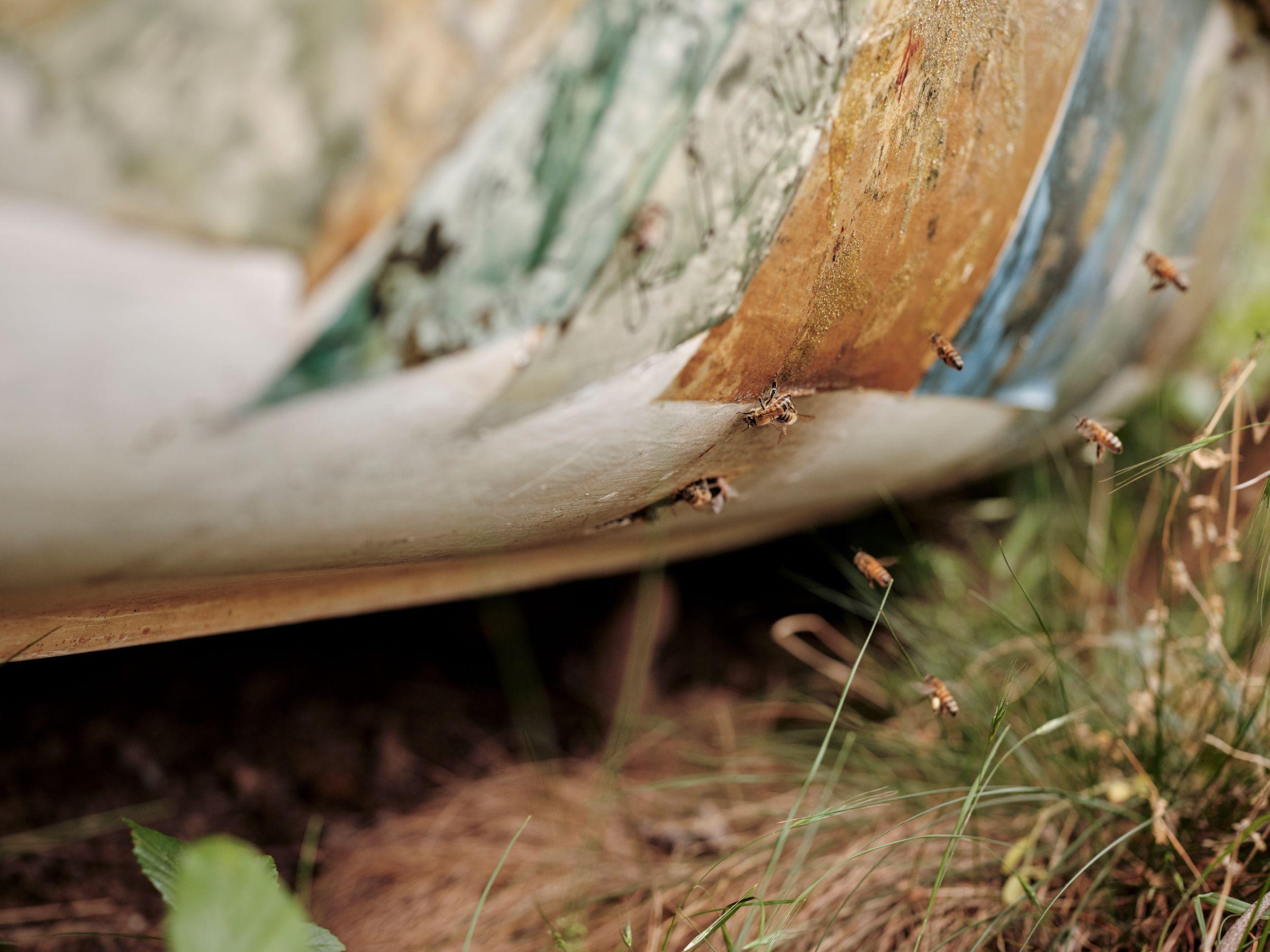
Wild bees
This abandoned boat on the site has been colonised by wild bees. Persuading the bees to leave the boat for the safety of a proper hive is a slow process that involves luring them out over the course of a month.
Look out for the first ever Royal Docks honey this summer, or help feed London’s bees by planting pollinators.


